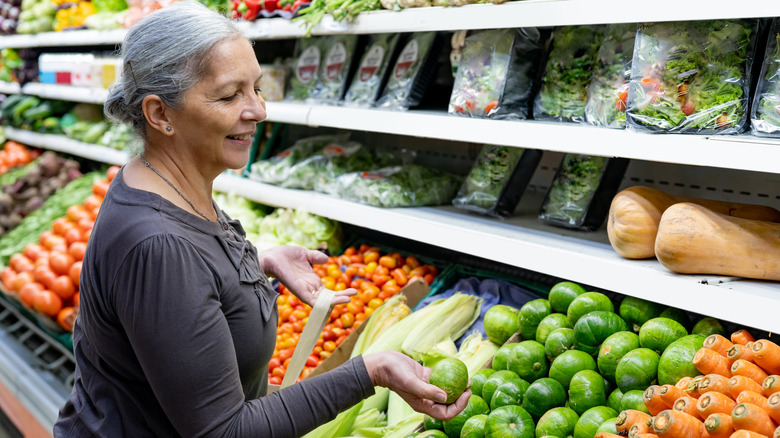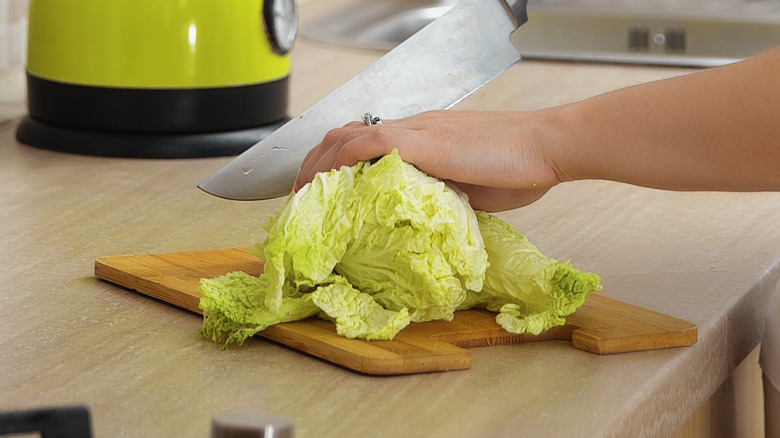Eat This Vegetable To Lower High Cholesterol And High Blood Pressure At The Same Time
For people who have high cholesterol (hypercholesterolemia), as well as high blood pressure (hypertension), each can feel like two different health problems needing to be tackled separately. Yet it's not uncommon to see overlap between the two. WebMD reports that more than 60% of individuals with hypertension are also living with hypercholesterolemia. What makes high blood pressure and high cholesterol so closely intertwined? Both can lead to the clogging of artery walls. If cholesterol accumulates within the arteries, this increases the amount of force the heart needs to pump blood, resulting in increased blood pressure. Oppositely, having high blood pressure can cause injury to the artery walls, where cholesterol can easily build up.
Diet modifications can help reduce both high cholesterol and high blood pressure measurements. To do so, patients are often recommended to stick to fish, whole grains, nuts, seeds, fruits, and veggies. However, cabbage is one powerhouse vegetable that offers us a great 2-for-1 deal.
How cabbage may help lower cholesterol levels
While it may not be the first leafy green vegetable most of us reach for, Cleveland Clinic experts explain that cabbage can simultaneously lower cholesterol and blood pressure levels. Let's take a look at cholesterol first. Researchers from a 2016 study published in the Journal of Agricultural and Food Chemistry found that dietary supplementation of red cabbage microgreens produced significant drops in "bad" LDL cholesterol levels in mice given a high-fat diet.
These benefits can be traced to cabbage's phytosterols, or natural cholesterol-lowering plant compounds, as well as the vegetable's fiber content. In 1 cup of shredded raw cabbage, the U.S. Department of Agriculture (USDA) reports that you'll find 1.75 grams of fiber. Similarly, in 1 cup of shredded, raw red cabbage, you'll get 1.47 grams of fiber (via USDA). Even a ½-cup serving of shredded, cooked, drained cabbage with no salt added contains 1.42 grams of the nutrient (via USDA). When it comes to fiber, you really can't go wrong with whichever form of cabbage you choose.
How cabbage might also help reduce blood pressure
Cabbage is one of many foods that are rich in potassium, which plays a key role in regulating our blood pressure levels (via Cleveland Clinic). In 1 cup of shredded raw cabbage, you'll find 119 milligrams of potassium (via USDA), while 170 milligrams can be found in the same-size serving of shredded, raw red cabbage (via USDA). In a ½-cup serving of shredded, cooked, drained cabbage without added salt, you'll get 147 milligrams of potassium.
Experts at Lifespan explain that cabbage also contains compounds called anthocyanins. According to a 2012 study published in The American Journal of Clinical Nutrition, women between the ages of 18 and 75 who had a higher anthocyanin intake were found to have lower central systolic blood pressure measurements (the top number of your blood pressure reading). Anthocyanin intake was also associated with reduced stiffening of the artery walls, making these compounds a potentially effective means of reducing one's risk for cardiovascular disease.



